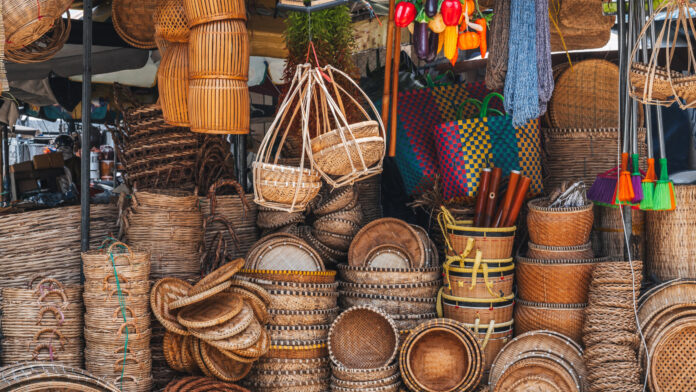Strategies to Market Sri Lanka’s Handmade Goods Internationally
Frontpage Journal | July 2025
Sri Lanka’s rich tradition of handmade crafts, from exquisite pottery to delicate lacework and intricate jewelry, holds immense potential to capture the attention of discerning consumers around the world. However, despite the inherent quality and cultural value of these artisanal products, the journey from local villages to global markets remains fraught with challenges.
A strategic, well-researched approach is required to position Sri Lanka’s handmade goods successfully on the international stage.
One of the primary challenges is market visibility. Unlike mass-produced commodities, handmade products rely heavily on storytelling and authenticity to differentiate themselves. This means building strong brand identities that resonate with consumers who seek meaning and craftsmanship rather than mere utility. Effective branding begins with educating consumers about the provenance, cultural significance, and sustainable values embedded in each product.
Export-ready handmade goods must also meet international standards in quality, safety, and packaging. Compliance with these regulations requires investment in quality assurance systems and knowledge of target market requirements. Exporters and artisan cooperatives benefit from training in product standardization, certification, and quality control.
Governments and industry bodies can facilitate this by creating guidelines and support programs.
Accessing distribution channels is another strategic hurdle. Sri Lankan handmade goods need to be present where premium consumers shop, whether in boutique stores, luxury department stores, or curated online platforms specializing in artisanal products. Partnerships with established global retailers and participation in international trade fairs increase product visibility and credibility. Digital marketing plays an increasingly important role in reaching
niche consumer segments and building direct-to-consumer relationships.

E-commerce platforms present both opportunity and challenge. They allow small-scale producers to reach global consumers without extensive infrastructure. However, competition is fierce, and standing out requires compelling visuals, engaging content, and efficient logistics. Building an online presence includes search engine optimization, social media campaigns, and collaborations with influencers or cultural ambassadors.
Sustainability is a key factor in marketing handmade goods internationally. Eco-conscious consumers prioritize products made from natural or recycled materials, produced under fair labor conditions. Artisans and exporters must document and communicate these sustainability credentials clearly. Certifications such as Fair Trade, organic, or carbon-neutral labels can add
value and justify premium pricing.
Another essential strategy is storytelling. Each handmade product carries a unique narrative, about the artisan, the cultural tradition, the materials, and the techniques used. These stories create emotional connections that differentiate Sri Lankan products in saturated markets.
Multi-media content such as videos, blogs, and virtual tours of artisan communities can amplify these narratives and build brand loyalty.
Building capacity within artisan communities is vital to sustaining international market efforts. Training in export procedures, intellectual property rights, product innovation, and digital literacy equips artisans to participate actively in global value chains. Strengthening cooperatives and producer networks enhances collective bargaining power and facilitates compliance with buyer requirements.

Strategic collaborations between government agencies, export promotion boards, industry associations, and the private sector can create integrated value chains that support artisan exporters. Infrastructure investments in transportation, warehousing, and customs facilitation improve supply chain efficiency and reliability. Such support also mitigates risks associated
with currency fluctuations and trade barriers.
Furthermore, tapping into the Sri Lankan diaspora as brand ambassadors and distribution partners opens additional pathways to international markets. Diaspora communities often have a keen interest in authentic cultural products and can serve as early adopters and influencers within their local markets.
Digital technology enhances these efforts by providing data-driven market insights. Analytics tools help identify emerging trends, consumer preferences, and competitive positioning, enabling artisans and exporters to adapt strategies proactively. Technology also facilitates transparency and traceability, which are increasingly demanded by international buyers.
The global handmade goods market is evolving, with growing appreciation for slow fashion, sustainable home décor, and artisanal lifestyle products. Sri Lanka’s craftsmanship, when supported by strategic marketing and capacity building, can capture significant share in these segments. This requires a coordinated, long-term approach that integrates product development, branding, compliance, distribution, and storytelling.
In conclusion, bringing Sri Lanka’s handmade goods from village workshops to global consumers demands more than exceptional craftsmanship. It calls for a holistic strategy combining market intelligence, quality assurance, brand storytelling, and capacity development. For business leaders, policymakers, and industry stakeholders, investing in this strategy offers the dual benefit of economic growth and cultural preservation. It positions Sri Lanka as a key player in the global artisan economy and ensures that its rich heritage
continues to thrive in the modern world.




